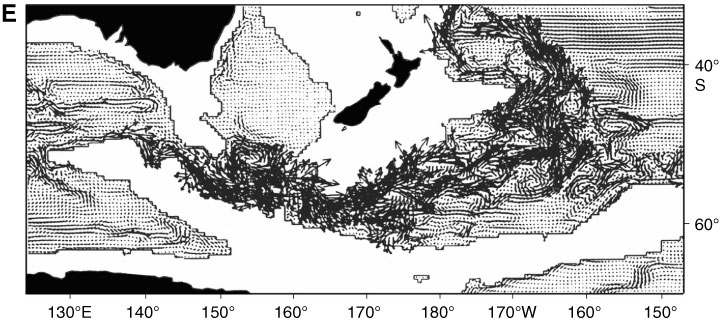
Global
Ocean Circulations
"Two
prominent global-scale ocean circulations, namely the thermohaline ‘conveyor
belt’ and the Antarctic Circumpolar Current, are difficult to treat on an
individual or partial basis.... These two circulations interact extensively with
each other, via both mean and eddy flows; and the two are jointly affected by
thermohaline and wind forcing. Thus many ocean regions and processes are
significantly interdependent, and use of a global model is advisable."
A.J.
Semtner and R.M. Chervin (1992)
E. Modeled flow field of the Australasian Southern Ocean part of the global ocean,5 depicted as a time-averaged vector plot over 5 yr for a water depth range of 3300–5000 m and using a seasonal forcing simulation at 0.5° resolution. An arrow of length 2° in latitude or longitude represents a transport of 5000 m cm/s. Black = Australian, New Zealand, and Antarctic continents, white = seafloor shallower than 3300 m. The model resolves well the strong flows of the Antarctic Circumpolar and Deep Western Boundary currents, apart from an underestimate of the amount of westward flow which occurs adjacent to the Hikurangi Plateau, northen edge of the New Zealand microcontinent.

5After Semtner and Chervin, 1992, plate 9.
![]()